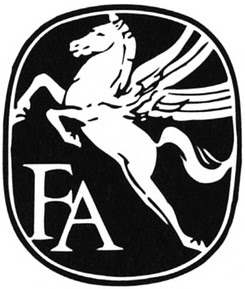Every once in a while, you run across a story that no one seems to know the complete truth about or that many get wrong, and few get right.
The story of the Smith & Wesson/Aircraft Armament Inc QSPR revolver is one of those.
Let's begin with the reason for the program in the first place.
In the late 1950s / early 1960s Victor Charlie aka Viet Cong aka North Vietnamese Regulars were building a network of tunnels to ferry personnel, supplies and weapons to battlefields in the south. These tunnels also offered an escape route when things went wrong or a means of surprise attack and disappear.
The Army began raiding these tunnels as soon as they figured out where the bastards were coming from.
Two things about exploring a tunnel, it is dark and not wide enough for two men side by side....it is a solo mission. This required the "tunnel rats" as they were unofficially known, to have the means to both see the enemy and to dispatch them.
This was how the tunnel rats were originally equipped, an angle head flashlight and a 1911, as depicted in the movie Forrest Gump.
That last part, the part about shooting, required some solicitous inquiry, discharging a firearm in a tunnel could easily do irreversible damage to one's ear, or at the very least cause nausea and disorientation.....not good in battle, much less in a dark tunnel.
The Army's first attempt was a Smith & Wesson model 10 equipped with a suppressor and a reduced barrel gap....Anyone who knows much about guns will tell you that you cannot successfully silence a revolver. The gap between the cylinder and barrel will allow the back pressure and noise to escape. This famous picture shows the second way the tunnel rats were equipped.
Meanwhile back at HQ, the Army put some geniuses at the Aberdeen Proving Grounds on the project and a new concept evolved.
Smith & Wesson was contracted to supply some special model 29 revolvers. Here is where things get murky. Some say that S&W modified the guns before shipping them to Aircraft Armament Incorporated. Some say AAI performed the modifications.
I doubt AAI had the ability to swap the pinned barrels and reblue the guns, so it would make sense that the machine work and bluing would be done by the experts in Springfield.
At any rate the guns were equipped with a smooth bore barrel measuring .4" (instead of the 44 Mag's .429" bore). I would assume this was so that the shot cup from a .410 bore shotgun could be used?
The cylinders were bored out to .528", not leaving much material, but that was OK, because the cartridges being designed would hold the pressure.
From the outside, the guns looked like a typical N-Frame equipped with Magna grips and a very short barrel (1 3/8" long). Also note the lack of sights, no need for those in a tunnel with distances close enough to smell Charlie's bad breath.
The cartridge is where the magic happened. the blast would be completely contained within the carbon steel case.
The primer and propellent would be loaded into the back via a screw on cap, when fired the piston would drive forward, but not exit the cartridge, thus no muzzle blast and a diminished report.
A plastic shot cup (called a sabot by some) contained 15 small balls reportedly made of lead, tungsten alloy or depleted uranium, your choice to believe which. Honestly it may have been all three as this was an experimental program after all.
The cartridges could be reused. There are few pictures of the cartridges to examine, some say they had a special coating, others think it was just typical black oxide (bluing). The pictures below are supposedly of the only remaining cartridge in existence. The story goes that the ATF or some other alphabet spook made sure they were disposed of.
This picture from cartridgecollector.net shows another intact cartridge, with some finish degradation which suggests that it might not be black oxide.
The limited reports from the field were positive, though no one seems to be able to get their hands on any of the actual reports. One wonders if the pistol worked so well, why was the program scrapped? Or was it even scrapped? Also, why the secrecy? I mean this was inventive, but it is hardly the recipe for atomic fission.
















%20and%2015%20more%20pages%20-%20Personal%20-%20Mic.png)




%20and%2015%20more%20pages%20-%20Personal%20-%20Microsoft%E2%80%8B%20Edge.png)
%20and%2017%20more%20pages%20-%20Personal%20-%20Micro.png)
.jpg)





%20STUPID%20CURSED%20GUN%20IMAGES%20-%20YouTube%20and%207%20more%20pages%20-%20Personal%20-%20Microsof.png)




.jpg)

.jpg)








%20and%2013%20more%20pages%20-%20Personal%20-%20Microsoft%E2%80%8B%20Edge.png)










